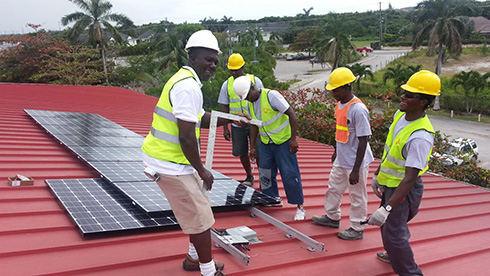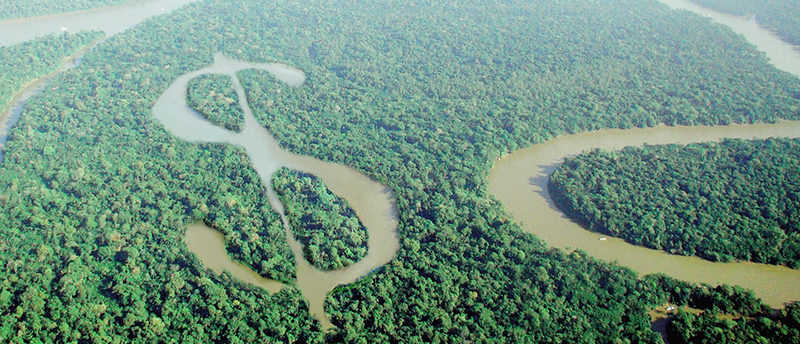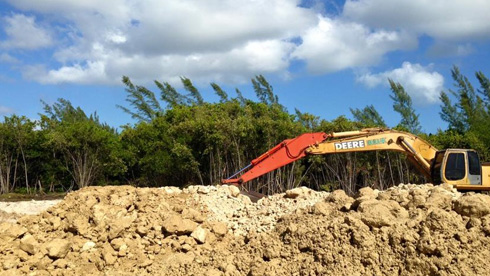what we do
Island Offsets is a non-profit NGO created to mitigate climate change by supporting projects that benefit the Cayman Islands
Please help to support our local carbon offsetting projects
Island Offsets is committed to saving the world right here at home. When you offset your carbon footprint through us, your investment is used to fund projects in the Cayman Islands and promote real change in our community.
We currently provide two local carbon offsetting projects – which would you like to support?

Solar for Schools Program
We work in conjunction with GreenTech Environmental to fund a solar array for a local school. The amount of energy produced by the panels offsets your carbon emissions and helps to reduce global carbon pollution.
Each school fitted with solar will have computer access to the panels allowing the students to monitor energy being created in real time. The panels reduce the traditional energy used by the school while benefitting community development and education of future generations.
Contact us for more info

Prevention of Deforestation
Funds raised by Island Offsets is used to purchase land that would otherwise have been deforested. The trees are saved to absorb carbon from the atmosphere while the carbon that they hold in their tissues and in the soil continues to be sequestered for generations to come.
This project also provides important co-benefits including the conservation of critical habitat for Cayman's unique biodiversity as well as the protection of the islands' natural beauty from indiscriminate development.
Contact us for more info
Environment, Social & (Corporate) Governance
Compensate for your unavoidable carbon emissions by protecting threatened critical ecosystems right here in the Cayman Islands. Your commitment to slowing climate change by reducing your carbon footprint is a responsible and necessary step in conserving our world for future generations.
By committing to a net-zero pledge through Island Offsets, your contribution will be used to acquire and forever protect wetland areas that would otherwise have been deforested. Mangroves are known as one of the best ecosystems in the world at carbon sequestration and storage. If left undisturbed, they can store away carbon for thousands of years in the deep mud beneath their roots. However, if deforested, those carbon compounds are oxidized and returned to the atmosphere in one large pulse, very similar to the burning of fossil fuels. The tragedy of mangrove deforestation isn’t just the loss of the trees and their ability to sequester carbon every day through photosynthesis, but the loss of thousands of years of carbon stored in the soil beneath them. Your donation keeps that carbon locked away essentially forever.
The tragedy of mangrove deforestation isn’t just the loss of the trees and their ability to sequester carbon every day through photosynthesis, but the loss of thousands of years of carbon stored in the soil beneath them.
Additionally, these offsets help local communities adapt and become more resilient to the inevitable effects of a changing climate. The mangroves protect the island from an increasing number of storms, absorbing wind and wave energy. They also create their own rain, compensating for the more frequent droughts that climate change is expected to bring. Wetland ecosystems even act as a sponge, absorbing the excess rainfall from an increased number of flooding events. It’s also important to remember that while we are experiencing a climate crisis, we are also undergoing a related biodiversity crisis. Preserving our mangrove ecosystems preserves habitat for commercially important fish, insect pollinators, and even the Cayman Parrot, our National Bird.
Island Offsets and the National Trust pride ourselves on our transparency. Our program records are publicly accessible and purchased mangrove areas are legally protected as inalienable so that you have the confidence in knowing that the land can never be sold. Our National Trust protected areas can be viewed using remote imagery proving that the land remains forested, and the carbon protected, for generations to come. We also have a 501c3 partner in the US for businesses and individuals interested in a tax-deductible donation.
Compensate for your unavoidable carbon emissions by protecting at-risk mangroves in the Cayman Islands. You can feel secure in the knowledge that your donation is creating a real impact on the ground locally while also having a positive impact globally.
Other ways you can help
There are many ways you can help preserve natural resources and help to keep the Cayman Islands beautiful.
Planning a green wedding
Most couples will spend more on their wedding than any other single expenditure in their lifetimes except for their car or home. Couples who share a commitment to the environment and want their wedding to reflect their commitment to sustainability have many options open to them in the Cayman Islands.
You’ve already chosen a beautiful natural environment for your wedding venue and the other choices you’ll make for your special day will leave Cayman as beautiful as you found it while helping to promote sustainable businesses practices.
- Use a hotel that has a commitment to operating in a sustainable manner.
- Choose a restaurant or caterer that is willing to serve fresh, locally produced, organic and/or sustainably harvested food and beverages. Using local food requires less fossil fuel for transportation, whereas organic food grown without synthetic pesticides or fertilizers helps to protect soil, water, and wildlife.
- Make sure that your restaurant or caterer adheres to the guidelines published by Cayman Sea Sense, a local non-profit group that dedicates itself to helping restaurants offer sustainably-harvested seafood. For an exotic menu item, consider serving lionfish, an invasive but beautiful fish that has already decimated life on the reefs in the Bahamas and which the Cayman Islands is working hard to control.
- Ways to reduce waste include using reusable dishware, utensils, napkins and tablecloths. If reusable durable food service items are not available, use recyclable food service items. Options include biodegradable dishes and flatware made from cornstarch or sugar cane. In addition, avoid serving individually packaged condiments. Instead serve condiments such as cream, sugar, salad dressing, ketchup, etc. in attractive bulk dispensers.
- Buy locally grown plants and flowers or rent them from a local nursery.
Carbon neutral travel
Visiting tropical areas is a wonderful way to relax and get away from it all. Unfortunately, travel and tourism are often environmentally destructive, particularly with regard to transportation and its related climate change impacts.
Transportation, both on air and ground, is one of the largest contributors of greenhouse gas emissions adding to climate change. For the traveler, simple choices can have a lasting impact on the planet. Spend your dollars with travel businesses that are interested in protecting the beautiful destinations we all love to visit.
- Air Travel – Aviation is now the fastest growing contributor to greenhouse gases and it’s an unfortunate truth that by flying to the destinations we love so much, we’re actively contributing to climate change. Not only do planes release greenhouse gases, they also release it in the delicate upper atmosphere where its impact is far greater.By offsetting the emissions from your flight you can fly in the knowledge that you have greatly reduced the impact of your holiday. An average American, who takes one or two trips abroad, emits 19,841 pounds of carbon a year. If everyone in the world emitted this much carbon, we would need 2 1/2 planets to support us all. Please offset your flights whenever possible.carbon neutral travel – diagram
- Ground Travel – Use the hotel van instead of renting a car. Use the bus for an interesting local cultural experience. Share taxis. Less pollution, and you can leave the driving to others.
- Hotels which have an environmental agenda deserve your patronisation. Look for hotels that are certified green and have written procedures for environmental impact and cultural policies. Book your guest rooms and meeting rooms with these hotels and let management know why you’ve chosen them.
- Restaurants – Choose restaurants that offer locally grown produce and serve sustainably harvested seafood. Check out Cayman Sea Sense for a list of restaurants that have made the commitment to serve only seafood that has been harvested in a sustainable way.
- Buy local products and services. Choosing to support locally-owned businesses, community tour operators, and artisans means that you’ll have a one-of-a-kind experience and your money will go directly to the community. Before purchasing goods, ask about their origin. Avoid buying products made from threatened natural resources.
- Tread lightly. The Cayman Islands are proud of their beautiful but fragile eco-systems. Do your part to keep them that way by following designated trails, respecting caretakers, and not removing biological treasures.
properly dispose of batteries. - Be a considerate guest. Reduce, reuse, and recycle. Even though you are just visiting and not paying the utility bill, disposing of your garbage properly and minimising your consumption of water and energy will benefit the Cayman Islands overall. Remember that waste disposal on small islands is more challenging than it is at home. Please take any old batteries or plastic items back home for recycling whenever possible. If you take home left-overs from restaurant meals, ask for a square of aluminum foil or waxpaper instead of a foam container which takes up valuable landfill space and never biodegrades.
- Travel light – While books are great, a way to lighten your luggage and your carbon footprint is to carry e-books. So load up your iPad or gadget of choice with electronic travel guides or novels.
- Honor protected areas. When visiting protected areas learn and follow all advisories, rules, and regulations. Remember the fees you pay to use these areas support local efforts to conserve them.
- Give back. Help to preserve the Cayman Islands for generations to come by making a donation to programs that give back and benefit the local community.
Safe diving
- Avoid all contact with corals and other marine life
- Never chase or ride marine animal
- Take nothing living or dead out of the sea, except recent garbage
- Maintain good buoyancy control
- Practice good finning technique and body control
- Ensure all equipment is well secured so that it cannot drag or snag on corals
- Only handle, manipulate, or feed marine life under expert guidance, never just to take photographs
- Avoid using gloves and kneepads in coral reef environments
- Encourage and support the use of dive moorings
- Avoid buying souvenirs that include coral, turtle, or other marine life
- Learn all you can about coral reefs and the fish and marine creatures of the reef
- Take care not to litter, especially aboard dive boats
- Always pay protected area fees (even if voluntary)
- Strictly obey all local dive rules, regulations, and customs
